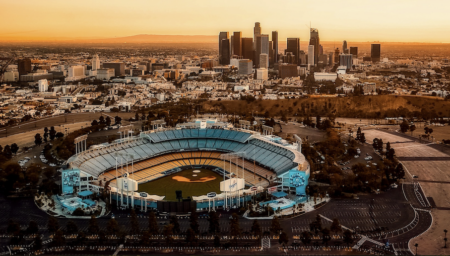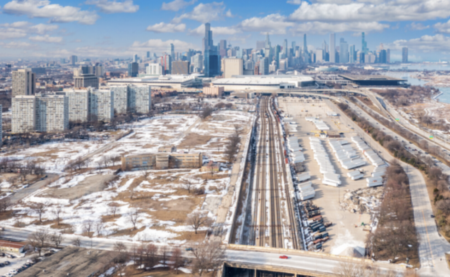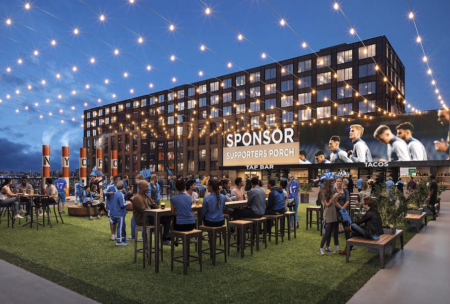Aecom’s London-based team works with Rio authorities to attempt to repeat London’s Olympic legacy success.
There’s no shortage of speculation surrounding how Brazil’s economic and political situation will hold up when the strains and stresses of the 2016 Olympic Games kick in on August 5. Leaked reports and emails suggest a certain amount of concern on behalf of the organizers, though the official position of the country’s Olympic committee is that the venues, and the city, will be ready on time.
There’s an equal amount of focus on what will become of Rio’s Olympic infrastructure after the conclusion of the games – something of genuine economic significance given how much it can cost a city to stage a modern Games.
Masterplanners Aecom, however, believe that Rio’s ambitions to stage the world’s ‘best value’ Olympics hinge, in part, on applying many of the legacy planning strategies showcased by the London 2012 Games. With a little under two months to go until the opening ceremony of the Rio 2016 Olympic and Paralympic Games, Rio is “on the cusp” of reaping the same legacy benefits enjoyed by the previous hosts, according to the Aecom team, the company behind both cities’ Olympic masterplans.
Aecom experts have drawn on the experiences of London 2012 to help Rio maximize the legacy potential of its Games. In London, 75% of capital expenditure was invested in transport and utilities infrastructure, land and water clean-up, public open spaces, new homes, and permanent sports and leisure facilities. A similar approach has been adopted in Rio. The Games have already helped accelerate the development of public transport, while power and data facilities installed to cater for 20,000 journalists from the international media will make the Olympic Park one of the best-connected districts in Rio.
Bill Hanway, global sports leader for Aecom explains, “Despite Brazil’s current economic and political challenges, the guiding principle has always been for the Games to serve Rio and boost its development, improving the quality of life for all its citizens. The Games are a catalyst for changing not only the city, but the aspirations of future generations.
“As with London, our approach is to take a long-term view that sees the Games as a milestone in the ongoing legacy program. The Games and the success of the event are the primary focus, but also serve as a driver for the future. It’s an opportunity to invest in underdeveloped areas and significantly upgrade transport and infrastructure. Rio is now on the cusp of reaping the legacy benefits.”
Aecom worked closely with Rio’s Municipal Olympic Company (EOM), exporting knowledge gained from delivering masterplanning, landscape architecture, engineering and sustainability services for the London 2012 Games. In Rio, Aecom has reprised these roles with additional responsibility for the preliminary design of the Barra Olympic Park’s sports arenas and detailed design of the International Broadcast Centre.
The Olympic Park is designed to prioritize the safety and free movement of the crowds – over 150,000 spectators are expected on peak days. At the conclusion of the Games, the focus will switch to the transformation of the site into green parkland. Aecom’s landscape design strategy calls for the transformation of large spectator areas into a new linear park for the community. The overriding goal is to deliver a sustainable Games in the very broadest sense, so the host city derives ongoing economic, social and environment benefits.
During the Games, spectators and athletes are the priority. The Via Olímpica, a broad weaving concourse running north to south, lies at the heart of the Barra Park and provides easy access to the sporting venues. Crowd flow dynamics were studied to optimize open spaces, the density of structures and positions of shaded garden rest areas.
Plants used throughout the Park progress from forest species in the north to coastal flora at the south. Native varieties have been used wherever possible, bringing the added benefit of less need for irrigation than foreign species.
The Aecom masterplan for Rio covers a 20-year period, and is split into three distinct phases: preparation for the event; a transitional phase; and the long-term legacy. All phases were planned in parallel to smooth the transition between modes. For example, the layout of roads and the capacity of utilities in the Barra Park were designed to cater for the planned residential, educational, commercial and sporting legacy.
The post-Games transition phase, including the deconstruction and repurposing of temporary structures, is scheduled to take between five and seven years to complete. In the legacy phase, more than three-quarters of the site will become a new neighborhood. Just under a quarter of the Barra site will be occupied by permanent sports facilities, which in legacy mode will provide elite training facilities for the Brazilian Olympic team as well as a sports high school for future Olympians. The velodrome will remain a cycling venue, the tennis center will be adapted to host tournaments, and the Carioca Arenas will become a Sports Academy School and multisport training facility. The Olympic Aquatics Stadium will be rebuilt as two smaller community pools.
In order to reduce the required levels of public spending, Rio’s authorities have sought partnerships with the private sector, while a focus on value has led to Olympic-quality facilities that have simplicity and sustainability at their heart. The International Broadcast Centre meets strict environmental and sustainability standards while also fulfilling broadcasters’ needs in terms of power and data connectivity, acoustics and temperature control. The Park, Aecom believes, will become one of Rio’s most sustainable districts.
As showcased by the London Games, temporary venues have proved a key aspect of Rio’s event masterplan. Aecom was tasked with delivering the strategy for reusable, temporary structures that could be moved and rebuilt as community facilities and schools after the Games. Venues including the Handball Arena and Olympic Aquatics Stadium employ efficient, highly standardized designs based on modular, stacked and repeated bolted steel structures to ease dismantling and reassembly. The Handball Arena, for example, will be transformed into four new primary schools across the city after the Games.
As well as providing full architectural services for the International Broadcast Centre, Aecom delivered preliminary designs for six new sports venues: the new Velodrome, Olympic Aquatics Stadium and Tennis Centre, as well as three adjoining Carioca Arenas that will host basketball, judo, taekwondo and wrestling competitions.
June 14, 2016




